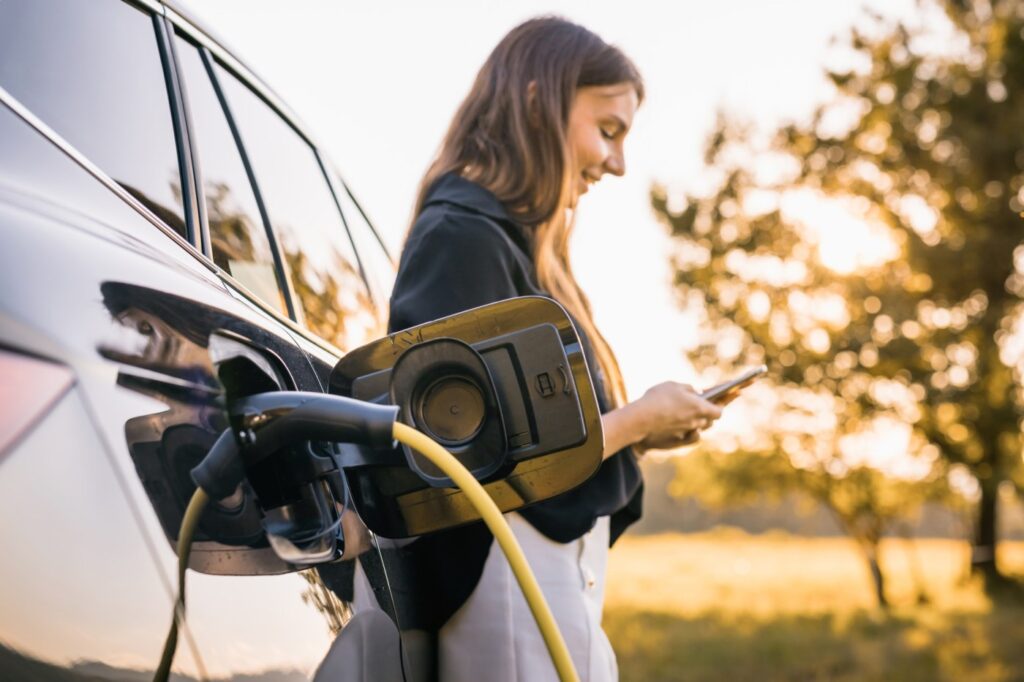
By Art Michalik
Electric vehicle adoption is set to surge over the next several years, driven by technological advancements, the expansion of public charging stations, and market dynamics that should make EVs more accessible to a broader range of consumers, a recent study suggests.
An estimated 79% of car shoppers will be looking at buying an EV by the end of this decade, according Cox Automotive’s 2024 Path to EV Adoption Study. Last year, EV sales in the U.S. market surpassed 1 million units for the first time, according to sales estimates by Kelley Blue Book.
Here are some of the big changes coming down the road.
Better batteries
New battery technologies are at the core of EV evolution, and several promising innovations are on the horizon. Solid state, sodium ion and lithium iron phosphate batteries could revolutionize EV performance and affordability.
Solid state batteries promise several advantages over today’s lithium ion technology, including faster charging times and higher energy density. These batteries replace the liquid electrolyte in traditional lithium ion cells with a solid electrolyte, enabling longer lifespans.
Sodium ion batteries use sodium instead of lithium, which is more abundant and cheaper to produce. Sodium ion batteries have the potential to significantly reduce EV costs, especially in the production of budget-friendly models.
Lithium iron phosphate (LFP) batteries are also gaining traction as a key technology. Hyundai and Kia recently announced a program to develop LFP batteries, which use iron and phosphate as active materials. LFP batteries are lighter, safer and have a longer lifespan than lithium ion batteries, studies suggest.
The expansion of charging infrastructure
The growing availability of public charging stations will also drive more widespread EV adoption, the study found. The National Renewable Energy Laboratory (NREL) projects that nearly 200,000 public charging stations will operate across the United States by 2030.
The increase in public charging infrastructure, especially the deployment of ultra-fast DC chargers, will significantly reduce charging times, making long-distance EV travel more practical and convenient, according to the NREL. DC chargers can provide up to an 80% charge in as little as 10 to 15 minutes, helping eliminate one of the perceived barriers to widespread EV adoption.
Additionally, home charging solutions are evolving. Wireless charging systems, which allow EVs to charge by parking over a charging pad, are already being tested and could become mainstream within the next few years. Another innovation, bidirectional charging, will allow owners to use their EVs as home backup power sources.
Market growth, affordability and demographic shifts
As EV technology advances and battery production becomes more efficient, the purchase price of a new EV will decline. Cox Automotive’s study suggests that less expensive EV models will soon enter the market, making EVs more affordable to a wide range of would-be buyers. Government incentives, such as tax credits and rebates, will continue to play a crucial role in lowering the cost of EVs.
While high-income luxury buyers have dominated the EV market, the next five years will significantly change as younger and budget-conscious consumers enter the scene. With more affordable models and a growing used EV market, Gen Z and Millennials—driven by a focus on sustainability—are expected to play a significant role. The Cox Automotive study shows rising interest from these groups, with 77% now considering used EVs, up from 62% just a few years ago.
Sustainability
Sustainability remains a top priority for automakers and battery producers, focusing on reducing the environmental impact of EVs. One solution lies in battery recycling technologies, which recover valuable materials like lithium, cobalt, and nickel from used batteries, reducing the need for new mining and minimizing waste.
Equally important are second-life applications, where batteries that have exhausted their EV use but still retain 70-80% capacity are repurposed for energy storage systems in homes and businesses. This approach extends the battery’s life cycle while supporting renewable energy capture.
In addition, automakers are moving toward circular economy models, where materials from used batteries are continuously recycled and reused to produce new batteries. By keeping valuable resources in circulation, this model minimizes the extraction of new raw materials and helps reduce the overall carbon footprint of EVs.
